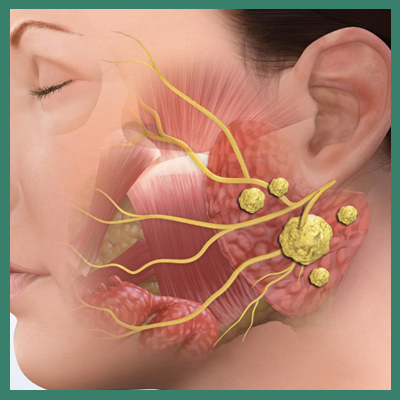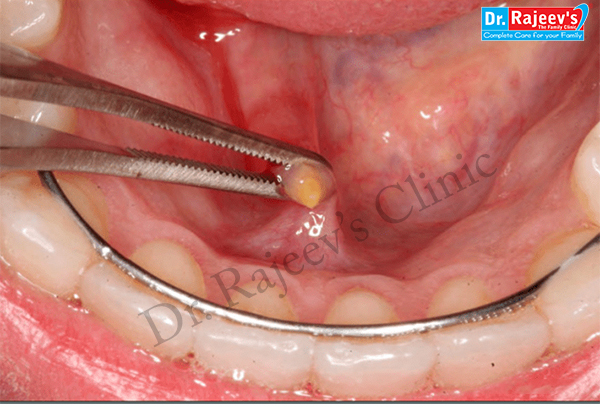

A salivary gland stone is not very common condition. It is also called as salivary duct stone. It can block the flow of saliva from flowing into the mouth.
In order to understand this condition, first let us understand the location and function of salivary glands in brief, There are three major salivary glands and other few minor glands each side of the jaw.
1. The parotid gland:
The parotids are a pair of major salivary glands and largest of the salivary glands. It is situated beneath the cheeks. Its secretion enters the oral cavity via parotid duct.
2. Submandibular gland:
This pair of submandibular glands is located just beneath the lower jaw on each side.
3. Sublingual glands:
As the name suggests, this pair of glands are below either side of the tongue.
4. Minor salivary glands:
Interestingly, there are over 800 tiny glands which are located all over the mouth, which produce saliva. They are present inside of cheeks, lips, and mucosal layer, parts of the palate, and the floor of the mouth.
FUNCTIONS OF SALIVARY GLANDS
Lubricant : The major function of saliva is to work as a lubricant in the mouth. Saliva coats entire mouth from inside, which is programmed to get secreted while eating, swallowing and talking. This lubricities action of saliva prepares the food for its further passage through food-pipe (esophagus) to the stomach.
Digestive : Digestion of the food begins from mouth, since saliva contains the enzymes like amylase, which helps in breaking down starch into simpler sugars, for easy absorption. Almost 30% starch digestion takes place in the mouth cavity.
Antimicrobial function : The food and drinks that we ingest is often full of organism such as bacteria and virus. The saliva is the first chemical secreted in the body to handle and clear the organisms to certain extent. Thanks to the anti-microbial activity of the saliva. Saliva has immunological action which also helps to prevent caries of the teeth.
Adding Taste to food : Saliva is very important in the sense of taste. The chemicals in food are carried to the taste buds thus saliva becomes the media to carry those chemicals and present to taste buds so that we can identify different taste.
Incidence : Males between 30-60 years seen more commonly affected by salivary stones.
Majority of the stones are known to occur in Submandibular gland almost 85%, occurrence in Parotid gland is 5-10%, very minimal that is 0-5% in sublingual gland.

No one knows the exact cause
Lack of adequate saliva formation
Many times the stones remain undetected because they do not produce symptoms till they become large enough to obstruct the duct, once it has reached the optimum size to produce symptoms it causes pain and swelling of the gland. This is triggered when salivary secretion is increased; for example, at the sight, smell, thought or taste of the food or when person is hungry or while chewing.
HOW TO DIAGNOSE
Tests have to be done for correct diagnosis and to rule out other conditions having similar symptoms. X-ray, CT scan or Ultrasound will help to make a quick diagnosis of this condition.
First thing to correct the causes for example dehydration or chronic long term medications, one can ask doctor to prescribe substitute for those medications
All the symptoms are due to obstruction of duct so main aim of treatment is to remove it. newer and less invasive technique called sialendoscopy is used to remove stones.
In most cases with recurrence removal of salivary gland is advised, but surgeries can be tricky because there are chances of damage to adjacent nerves that carries out facial movements as well as sweating, so best is to discuss with your surgeon regarding this.
Homeopathic medicine could help chronic inflammation and pain due to Salivary gland stone. If stone is small in size, there remains a possibility of some reduction or passing of the stone. However, mid or large size stone may require a surgical line of treatment. Recurrent stone formation could due helped to some extent.
Bromium, iodum, conium, spongia, calc flour.
RL10